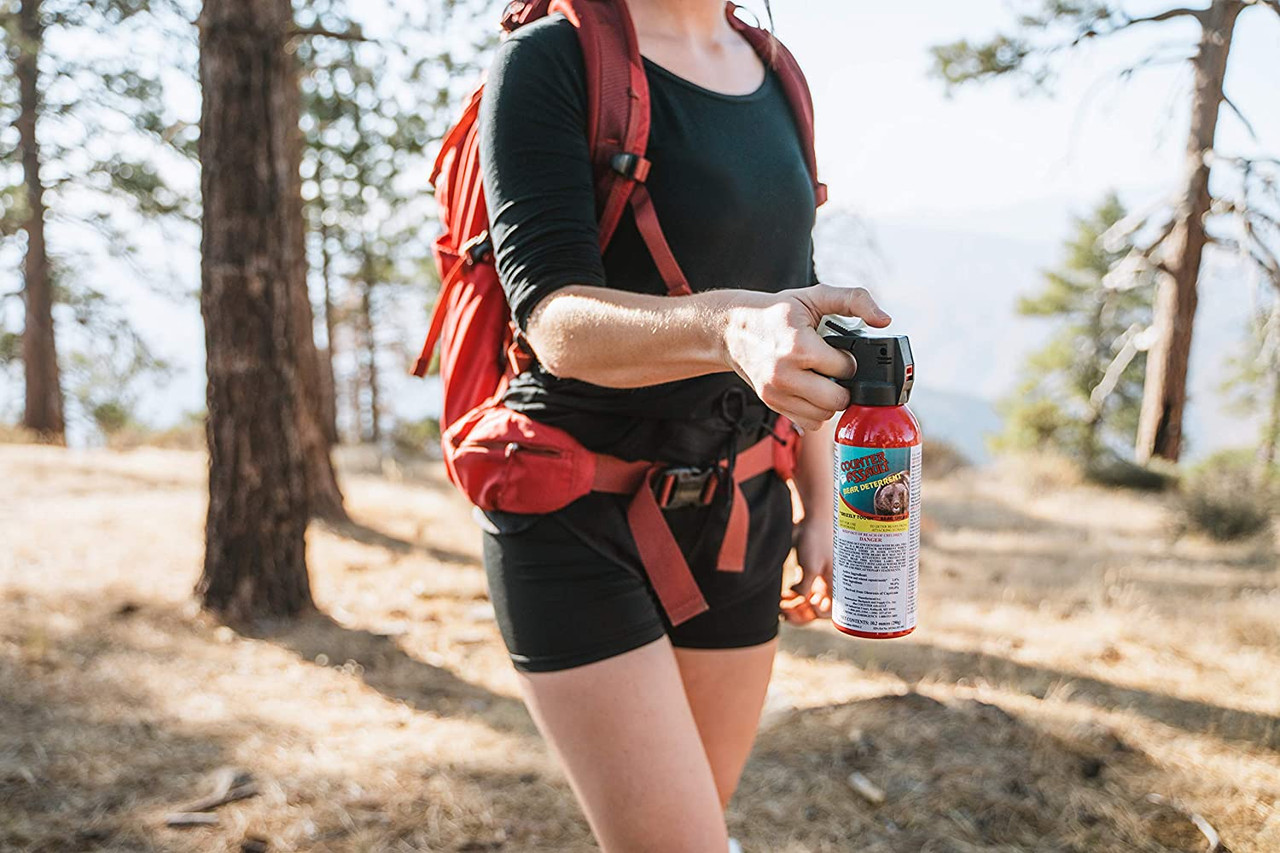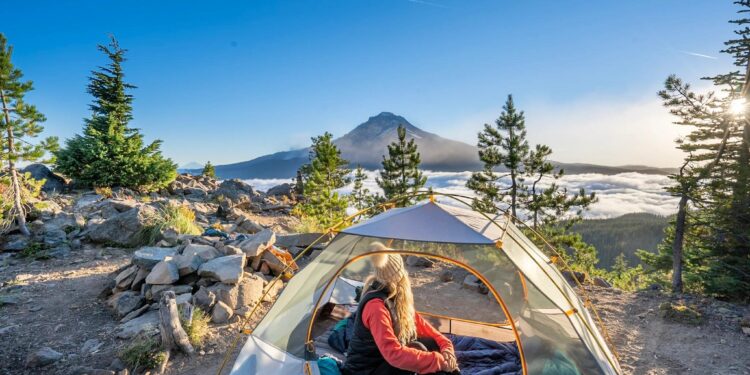Préparez votre aventure estivale de randonnée
L'été est là, et les amateurs de plein air du monde entier se préparent à partir à l'aventure dans les régions sauvages de l'Amérique. Si vous êtes novice en matière de randonnée, n'oubliez pas qu'une bonne planification est essentielle pour que votre randonnée soit sûre et agréable. Voici quelques points clés à prendre en compte avant d'entreprendre une randonnée estivale dans l'arrière-pays avec vos amis.
Nourriture et boissons adaptées aux sentiers

Si vous partez en pleine nature pour plus d'un après-midi, il est essentiel d'emporter de la nourriture. Il est essentiel de faire attention à ce que vous emportez, car certains aliments ne sont pas pratiques à transporter. Évitez de vous encombrer d'une glacière remplie de denrées périssables et optez plutôt pour des aliments adaptés à la randonnée, comme les pâtes, les nouilles et les repas déshydratés. Ces options peuvent être facilement réhydratées avec de l'eau, ce qui permet de réduire le poids et de minimiser la détérioration.
Pour vous hydrater, commencez par boire plusieurs grandes bouteilles d'eau, mais gardez à l'esprit qu'après les deux premiers jours, vous devrez purifier l'eau provenant de sources naturelles. Pour ce faire, vous pouvez utiliser des comprimés de purification, faire bouillir l'eau pendant au moins dix minutes ou utiliser une LifeStraw, qui vous permet de boire directement dans les cours d'eau et les lacs. Bien qu'il soit tout à fait possible d'emporter des boissons pour adultes pour se détendre au camp, n'oubliez pas de les consommer de manière responsable. La déshydratation peut vous surprendre et rien ne gâche plus rapidement une randonnée qu'une gueule de bois en pleine nature.
Attention aux allergies
L'arrière-pays regorge de pins odorants et de fleurs sauvages au printemps et en été, mais cette beauté peut être un cauchemar pour les personnes souffrant d'allergies saisonnières. Si vous faites partie des malheureux qui souffrent de ces allergies, ne les laissez pas vous empêcher de profiter des grands espaces. Envisagez plutôt d'utiliser le spray nasal Dymista, qui est efficace pour réduire le gonflement nasal et vous permettre de respirer librement.
En outre, le port de lunettes de soleil enveloppantes peut contribuer à empêcher le pollen de pénétrer dans vos yeux, améliorant ainsi considérablement vos chances de profiter du paysage sans être incommodé. Vérifiez toujours le taux de pollen dans la région où vous prévoyez de faire de la randonnée et soyez prêt à modifier vos plans si les niveaux sont particulièrement élevés.
Portez des moyens de dissuasion contre les ours

Même si vous n'êtes pas affecté par le pollen, il y a d'autres menaces à prendre en compte, notamment les ours. Il est essentiel de comprendre que si les ours ont généralement plus peur des humains, ils peuvent devenir agressifs s'ils sont surpris ou si vous vous interposez par inadvertance entre une mère et ses petits. Pour atténuer ce risque, emportez des moyens de dissuasion contre les ours lorsque vous faites de la randonnée dans l'arrière-pays.
Les cloches à ours peuvent être efficaces ; elles produisent un bruit qui alerte les ours de votre présence. Vous pouvez également investir dans des "bear bangers", des pétards qui produisent une forte détonation susceptible d'effrayer les animaux menaçants. Le spray anti-ours est un autre article important à avoir à portée de main ; la sensation de brûlure intense qu'il procure peut arrêter un ours en train de charger. Avant de partir en randonnée, vérifiez toujours la légalité des moyens de dissuasion des ours dans votre région, afin de vous conformer à la législation locale.
S'habiller de manière appropriée en fonction des conditions météorologiques
Le temps dans l'arrière-pays peut changer rapidement, il est donc essentiel de prévoir des vêtements qui vous garderont au chaud et au sec. Évitez les vêtements en coton, car ils absorbent l'humidité et la transpiration, ce qui vous expose à un risque d'hypothermie lorsque les températures chutent. Choisissez plutôt des matières synthétiques comme la laine, le polyester et le nylon, qui vous tiendront chaud tout en résistant à la pluie ou en la repoussant.
Portez une couche de base qui évacue l'humidité pour garder votre corps au sec, prévoyez une couche supplémentaire pour les matins froids et gardez une veste imperméable à portée de main dans votre sac. N'oubliez pas que le fait de porter plusieurs couches de vêtements vous permet de vous adapter facilement aux conditions changeantes et de rester à l'aise tout au long de votre randonnée.
Informer quelqu'un de vos projets
Enfin, il est essentiel d'informer une personne de confiance de vos projets de randonnée. Malgré les progrès des technologies de communication, les signaux cellulaires peuvent être peu fiables dans les zones reculées. Faites part de votre itinéraire de randonnée à vos amis, à votre famille ou aux gardes forestiers. Cette précaution permet de s'assurer qu'en cas de problème, comme le mauvais fonctionnement d'un dispositif SPOT ou un accident sans service cellulaire, quelqu'un saura qu'il faut appeler à l'aide si vous ne revenez pas comme prévu.
Envisagez de fixer une heure de retour ; si vous n'avez pas pris de nouvelles à cette heure-là, votre contact doit savoir qu'il doit lancer une recherche.
Conclusion
En gardant à l'esprit ces conseils essentiels, vous serez bien préparé pour vivre une aventure estivale sûre et mémorable dans les magnifiques paysages de l'arrière-pays américain. La beauté de la nature vous attend et, avec une bonne préparation, vous pourrez profiter au maximum de votre séjour en plein air et créer des souvenirs inoubliables avec vos amis tout en explorant les grands espaces sauvages. Profitez de l'aventure, veillez à votre sécurité et appréciez chaque instant de votre expérience de randonnée cet été !










